Ocean Infinity Invests in RAD Propulsion
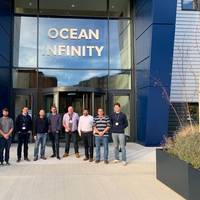
Marine electric product company RAD Propulsion announces that it has secured £1,000,000 investment from Ocean Infinity, a marine technology business that deploys innovative robotic and autonomous vessel solutions.The investment is part of a raise round to facilitate RAD’s rapid operational scale up as its RAD 40 electric drive goes into mass production. This year, RAD will see its products become available to OEM partners around the world, with new product development underway too.
Ocean Infinity Orders Six 85m Robotic Offshore Vessels from VARD
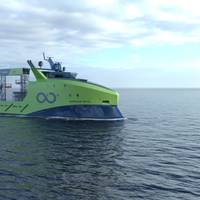
U.S.-based seabed survey and ocean exploration firm Ocean Infinity has hired VARD to design and build a new series of six multi-purpose offshore vessels that will all be operated from shore and will eventually run on green ammonia.This order of six, 85-metre, optionally crewed robotic vessels will take Ocean Infinity’s remote vessel fleet to 23 vessels, which the company says is the largest in the world. To remind, Ocean Infinity in early 2020 said it would launch a new marine technology and data company Armada…
Ocean Infinity Aims to Deliver Ammonia Fuel Propulsion Package for Armada Fleet

Ocean Infinity won The Clean Maritime Demonstration Competition, enabling it and its partners to build a Marine Propulsion Test facility, with an integrated Ammonia Marine Propulsion System (AMPS). The test facility is intended to demonstrate clean-fueled technology eventually capable of powering Ocean Infinity’s Armada fleet, using an innovative ammonia based fuel cell system.“Winning The Clean Maritime Demonstration Competition is a significant step forward in the delivery of a zero emissions marine propulsion system," said Dan Hook, Ocean Infinity’s CTO.
Ocean Infinity Acquires Red Rock
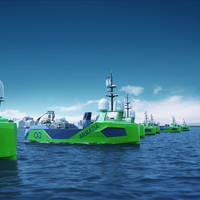
Marine robotics company Ocean Infinity announced it has acquired Red Rock, a technology company with solutions that will enable autonomous port operations, an enabler for future uncrewed shipping.Red Rock is developing digital and autonomous solutions in an effort to revolutionize lifting and handling both onshore and offshore.The acquisition will combine Ocean Infinity’s ‘Armada’ robotic vessels and low emission operations with Red Rock’s ability to develop hardware and software solutions for remote and autonomous handling.
Marine Autonomy: The Future is Being Revealed

Automation, where routine tasks are handled by machines, has been talked about throughout maritime sectors for much of the 21st Century. Initially touted by suppliers of engine room and bridge management systems for its cost savings (with reduced manning levels), its value proposition was then infused with risk management (reduced human error) and remote operations, where vessels could be managed from a shoreside control room. In early 2017, Rolls Royce —an early proponent of unmanned operations—teamed with tug operator Svitzer on a remotely operated vessel…
Autonomy: Inside the Building of Ocean Infinity’s Armada Fleet
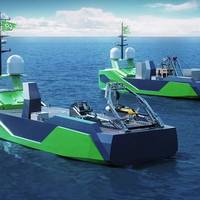
Back in 2017, Ocean Infinity made a novel move; deploying six autonomous underwater vehicles (AUVs), instead of just one, from a single vessel, vastly increasing the ground that could be covered in a single survey. Now the firm is taking the use of remote, robotic systems a significant step further.Back in 2017, Ocean Infinity made a novel move; deploying six autonomous underwater vehicles (AUVs), instead of just one, from a single vessel, vastly increasing the ground that could be covered in a single survey.
Ocean Infinity’s Hunt for the Submarine San Juan
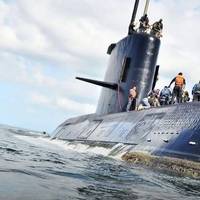
The search for the Argentinian submarine was like hunting for the proverbial needle in a hay stack, except that it was a piece of straw. Elaine Maslin reports. At 7.19am, local time, on November 15, 2017, the last message was received from the San Juan submarine. She belonged to the Argentinian navy and was on a routine mission from Ushuaia in the Patagonia region to Mar del Plata in Buenos Aires province when she lost contact with the military. Fifteen days later, neither the submarine nor any debris had been found and the crew of 44 sailors were presumed dead.
UK Funds Study on Navigation of Autonomous Ships
The United Kingdom Hydrographic Office (UKHO), a government agency has contributed to a new UK government-funded study on navigational requirements for autonomous maritime vessels.According to UKHO, it worked together with partner organisations L3 ASV and the Maritime and Coastguard Agency (MCA) to identify the future data requirements for autonomous shipping, and explore how navigational and wider geospatial data can be used to enable the safe navigation of smart and unmanned autonomous vessels.The study, funded by the Department for Transport’s Transport Technology Research Innovation Grant (T-TRIG), started by exploring the characteristics of current navigational data and charts in terms of what they comprise, their structure and how they are updated.
Future Unmanned Naval Systems for MMCM Program
Thales, BAE Systems and their partner SAAB, ECA Group and ASV Global welcome the confirmation by the Organization for Joint Armament Cooperation (OCCAR) that the UK Ministry of Defense (MOD) and French Defense Procurement Agency (DGA) will continue its collaboration for the combined United Kingdom and France MMCM (maritime mine counter measures) program. Initiated in 2010 under a cooperation agreement between France and the United Kingdom, the MMCM program develops a prototype autonomous system for detection and neutralisation of sea mines and underwater improvized explosive devices (UWIEDs). The agreement signed at Euronaval today between Harriet Baldwin…
Unmanned Surface Vessels: From Concept to Service
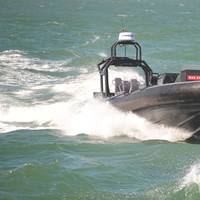
Over the next decade the maritime sector is likely to see one of the largest changes since sail gave way to steam. Unmanned Surface Vehicles (USV) are now being considered for various marine roles and the drivers for rapid development are significant. Unmanned or autonomous vessels have passed through the trial and evaluation stage and are now being adopted for civilian and military applications. The maritime sector now has the opportunity to shape technology developments from legislative and end-user standpoints.
Unmanned Vessels: The Future is Now

There is a global boom in the development of unmanned systems, from below the ocean’s surface to high in the sky to the world’s roads. Add to this list the maritime industry, on both military and civilian vessels. Maritime Reporter & Engineering News examines in depth recent developments taking place in Europe to discover general thoughts and technical trends driving the future of unmanned shipping. The joint European Research Project MUNIN was finalized in August 2015, a project…
ASV Wins Maritime Autonomy R&D Funding
ASV Ltd, in partnership with nine other commercial and research organisations, have been awarded funding by Innovate UK to undertake in excess of £3million worth of research and development for Maritime Autonomous Systems (MAS). Three separate projects involving ASV will look to address different areas covering the wide spectrum of activities concerning Maritime Autonomous Systems. These include software and communications, operations and regulations, autonomous vehicle interaction and launch and recovery. “ASV is delighted to be leading this pivotal research and development that will help secure the UK’s place at the cutting edge of maritime autonomy”, said Dan Hook, ASV Managing Director.
Autonomous Technology for Offshore Wind Farm
ASV Ltd in association with Planet Ocean Ltd, have received funding from the GROW:OffshoreWind initiative to investigate how the use of Autonomous Surface Vehicles (ASVs) could reduce the costs of offshore wind farm support. The project will look at using ASVs to reduce the cost of tasks related to the construction, operation and maintenance (O&M) of offshore wind farms. Together ASV and Planet Ocean will look at scour monitoring, cable position tracking, wave and meteorological monitoring, current profile monitoring and underwater noise monitoring. ASV will be presenting two of their ASVs, the C-Enduro and C-Worker whilst Planet Ocean who specialise in the provision of marine instruments will look at mission and sensor options.
Maritime Robot on Mission South of England
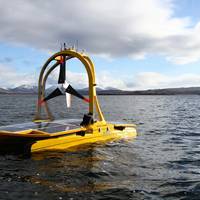
The ASV C-Enduro embarked on a robotics mission along with six other unmanned marine vessels off the southwest of England. Selected to take part by the National Oceanography Centre (NOC), C-Enduro is fitted with a range of meteorological and oceanographic sensors to collect scientific data about ocean processes and marine life. The project, coordinated by NOC, is the most ambitious of its kind in Europe. The vehicles are aiming to travel up to 300 miles over the next 20 days.
ASV Debuts New Unmanned Surface Vehicle
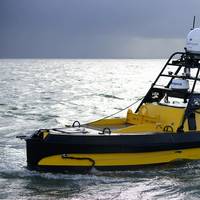
ASV introduced C-Worker, a multiuse offshore unmanned surface vehicle developed to conduct subsea positioning, surveying and environmental monitoring for oil and gas operations. C-Worker was demonstrated to members of the oil and gas and offshore surveying industries in January 2014 when ASV, alongside sister company C&C Technologies operated the vehicle in the Solent off Portsmouth, U.K. Fitted with a Sonardyne Gyro USBL acoustic positioning system, the vehicle successfully executed seabed positioning and Compatt calibration as well as station keeping and following survey lines.
Crew Systems Integration 2013 Program Announced
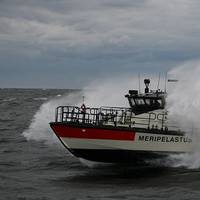
FRC International will host CSI 2013 - Crew Systems Integration conference from July 2-4, 2013 at RNLI Lifeboat College, Poole, U.K. The international conference includes over 20 presentations focusing on nine integrated topics for the RIB and high speed craft sector. Dr. Trevor Dobbins, Technical Director of FRC International, said, “The CSI concept brings together integrated topics which can improve RIB & HSC operations. Crew Systems Integration (CSI) is now a recognized requirement for many maritime organizations and CSI 2013 will cover a wide range of solutions for the professional sector.
Thales, ASV Develop Unmanned Minewarfare Vehicle
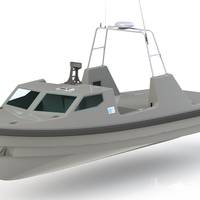
Thales UK has signed a contract with Autonomous Surface Vehicles Ltd (ASV Ltd) to develop a re-configurable Unmanned Surface Vehicle (USV) to meet the challenges of future off-board Mine Countermeasures (MCM) operations. The low signature USV, which is 11.5m in length and 3.6m in beam, will have a maximum speed of around 25 knots. The vehicle is now under construction and will be undergoing acceptance trials later this year. A series of payload trials will be conducted from early 2013 onwards, drawing on experience gained in previous off-board system programmes.





